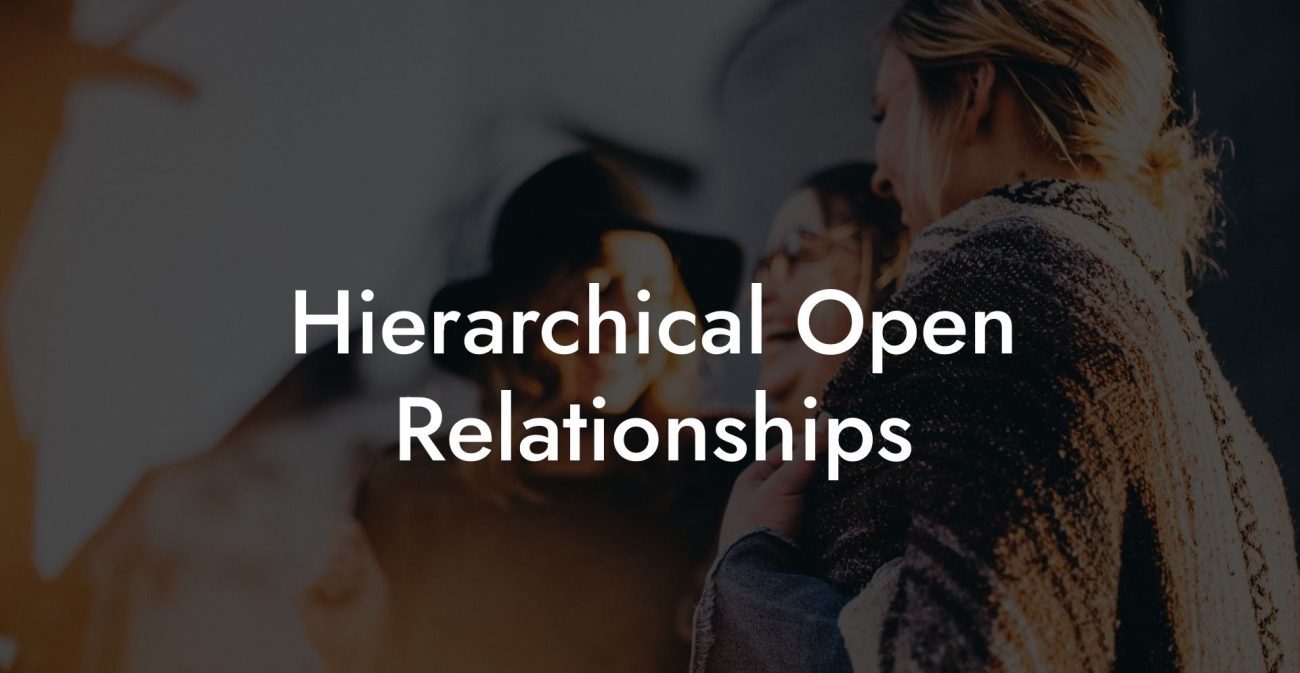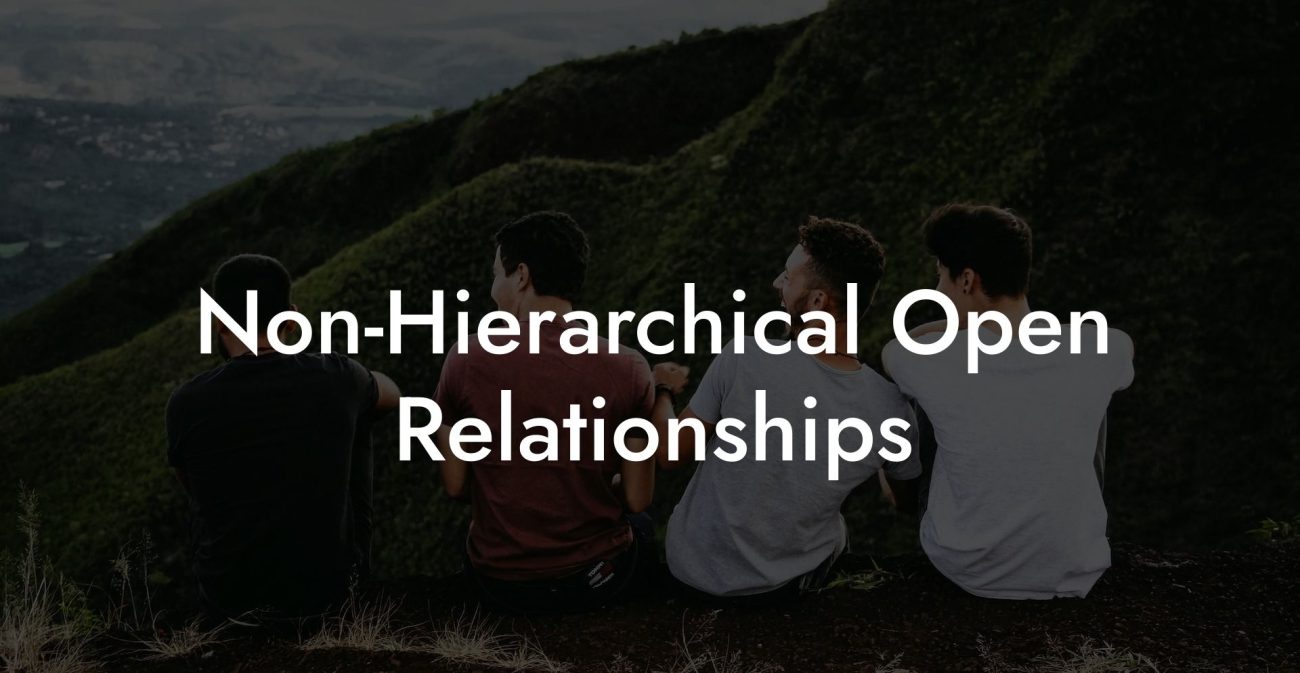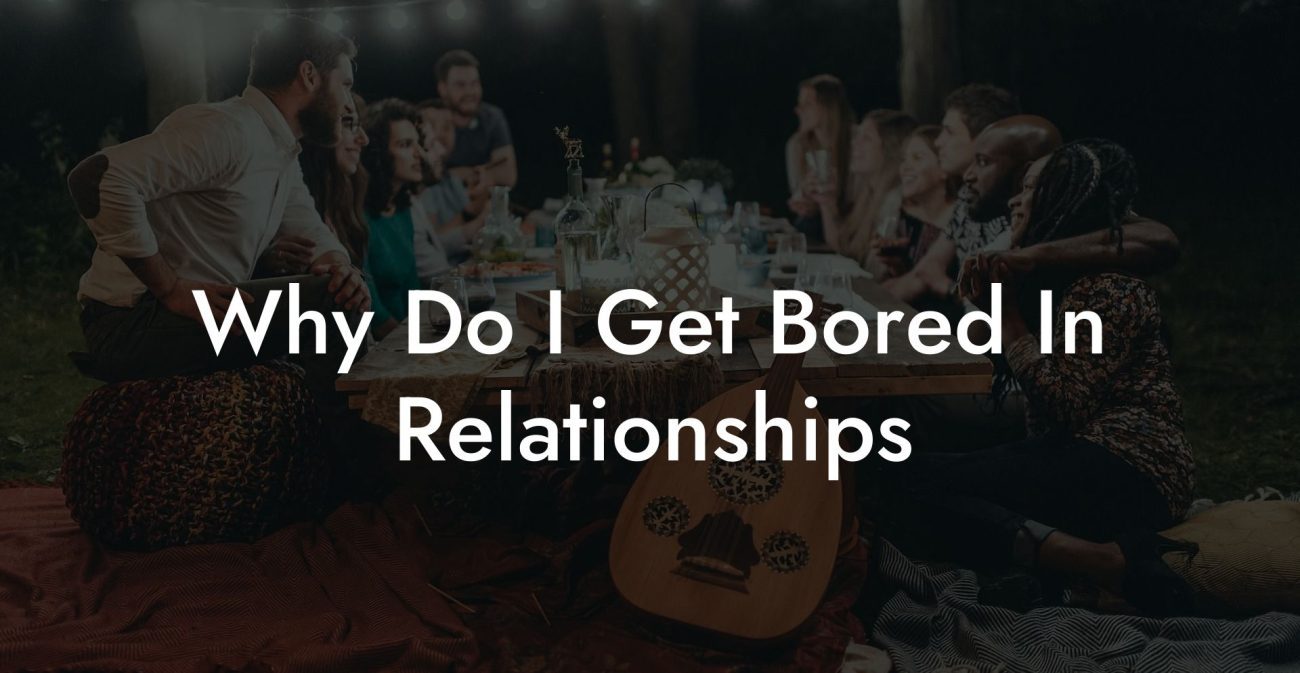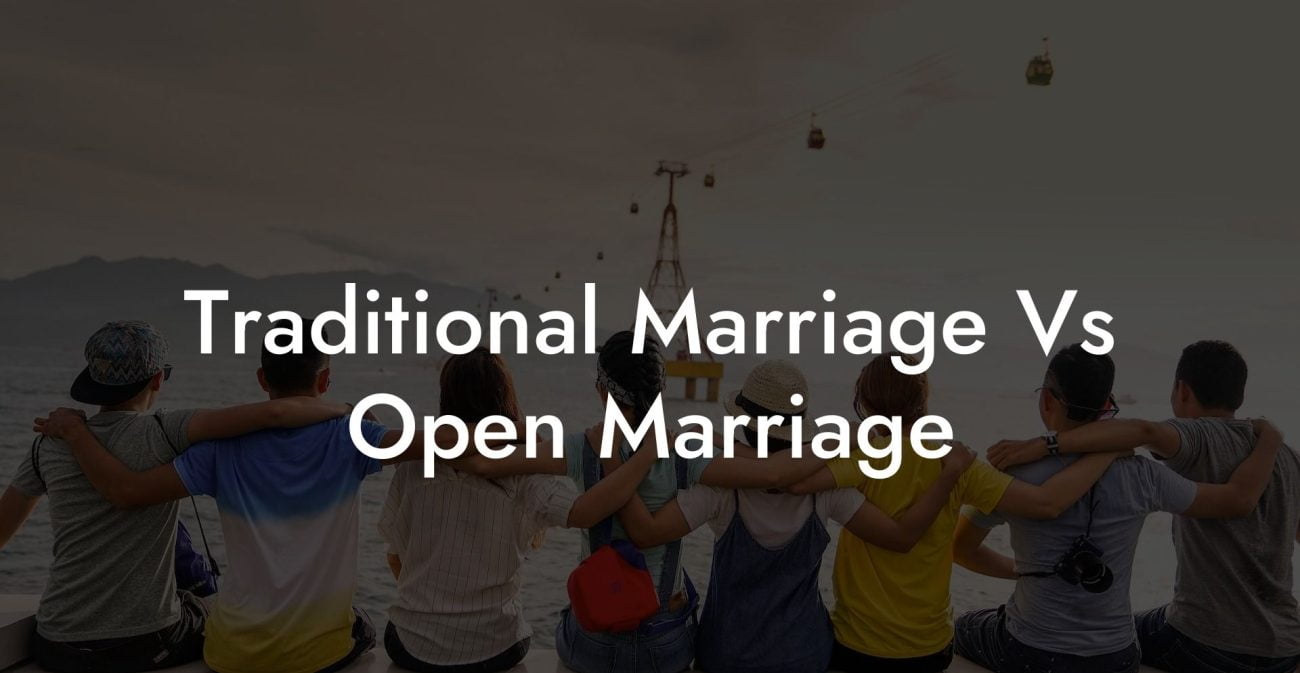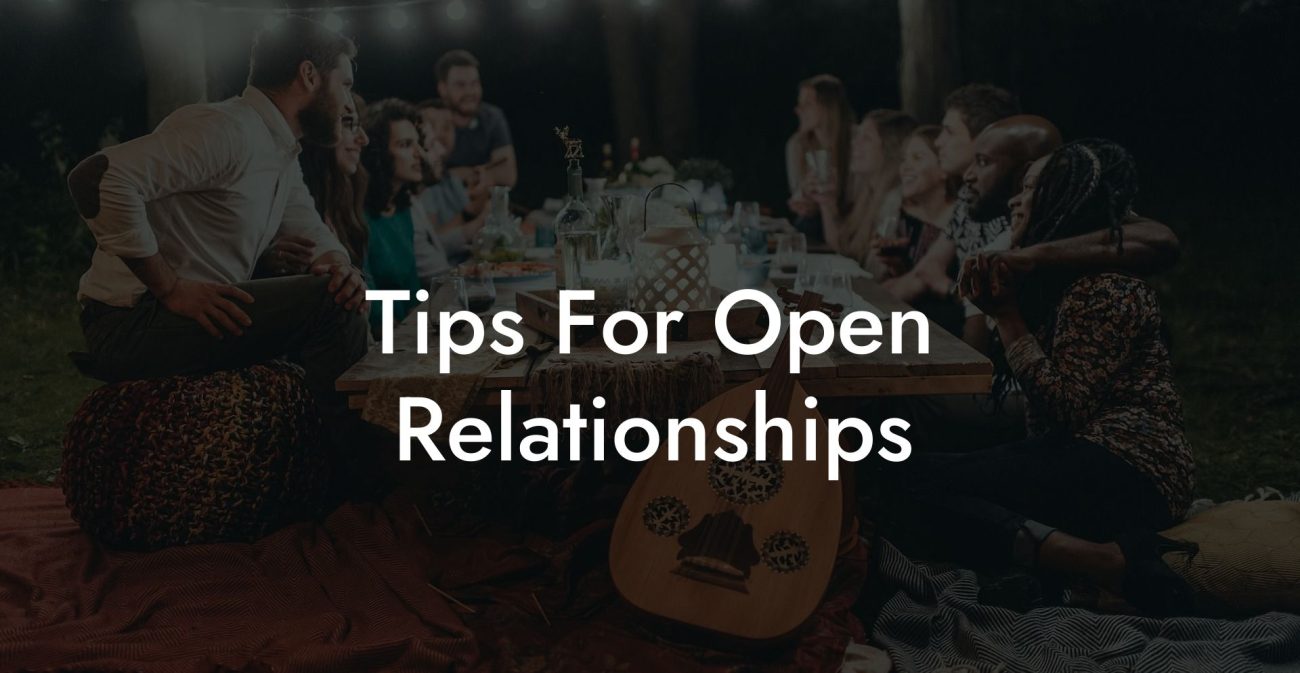Polyamorous Relationship Types

Increasingly, individuals are exploring polyamory, a form of consensual non-monogamy that allows for multiple romantic and/or sexual relationships simultaneously. This guide will help you understand the various types of polyamorous relationships, their core principles, benefits, challenges, and practical strategies for managing these diverse relationship configurations. Whether you are new to polyamory or a seasoned practitioner looking to refine your understanding, read on to discover the many ways people structure their intimate lives.
Quick Links to Useful Sections
- Introduction to Polyamorous Relationship Types
- What Is Polyamory?
- Definition and Core Principles
- Types of Polyamorous Relationships
- Hierarchical Polyamory
- Non-Hierarchical Polyamory
- Solo Polyamory
- Polyfidelity
- Relationship Anarchy
- Group Configurations: Triads, Quads, and Beyond
- Comparing Polyamorous Relationship Types
- Primary-Based Polyamory vs. Non-Hierarchical Polyamory
- Solo Polyamory vs. Group Polyamory
- Relationship Anarchy and Its Place in Polyamory
- Benefits of Understanding Polyamorous Relationship Types
- Challenges and Strategies for Success in Polyamorous Relationships
- Common Challenges
- Strategies for Overcoming Challenges
- Frequently Asked Questions (FAQ)
Introduction to Polyamorous Relationship Types
Polyamory is derived from the Greek “poly” (many) and the Latin “amor” (love), reflecting the idea that love is abundant rather than finite. Unlike monogamy, which is built around an exclusive partnership, polyamory allows individuals to develop multiple romantic and/or sexual relationships with the full knowledge and consent of everyone involved. However, not all polyamorous relationships are structured the same way. Understanding the various types of polyamorous relationships can help you identify which configuration best aligns with your values, emotional needs, and lifestyle.
In this guide, we explore several common polyamorous relationship types, including hierarchical and non-hierarchical models, solo polyamory, polyfidelity, relationship anarchy, and group configurations like triads and quads. Each type offers unique benefits and poses specific challenges, but all share a foundation built on open communication, mutual consent, and a commitment to ethical non-monogamy.
What Is Polyamory?
Definition and Core Principles
Polyamory is the practice of engaging in multiple consensual romantic and/or sexual relationships simultaneously. The core principles of polyamory include:
- Consensual Non-Monogamy: All relationships are built on informed consent and transparency; every partner is aware of the multiple connections.
- Transparent Communication: Open dialogue is essential for negotiating boundaries, addressing conflicts, and ensuring that all partners feel valued.
- Mutual Respect: Each individual’s needs, boundaries, and autonomy are respected, fostering an environment where personal growth is encouraged.
- Flexibility: Polyamorous relationships can be structured in many ways, allowing individuals to tailor their connections according to personal and collective needs.
- Emotional Depth: While some polyamorous connections are casual, many aim for deep emotional intimacy and long-term commitment.
These core principles provide the foundation for the various relationship types we will explore in this guide.
Types of Polyamorous Relationships
Hierarchical Polyamory
Hierarchical polyamory is a common configuration where one relationship is considered primary, and other relationships are classified as secondary or tertiary. In this model, the primary relationship is given priority in terms of time, emotional investment, and decision-making. The vertex of the hierarchy, the primary partner, often shares a more integrated life with the individual, such as living together or sharing finances, while secondary relationships may have fewer shared responsibilities.
Benefits: hierarchical polyamory can provide a clear structure and a stable foundation for the primary relationship while still allowing for additional connections.
Challenges: It can sometimes lead to feelings of inequality among secondary partners and may require ongoing negotiation to prevent feelings of neglect or jealousy.
Non-Hierarchical Polyamory
In non-hierarchical polyamory, all relationships are considered equal, with no single relationship taking precedence over another. This model emphasizes that each connection has its own value and that partners are free to interact without a strict ranking system.
Benefits: non-hierarchical polyamory fosters a sense of equality and mutual respect among all partners, and can lead to rich, diverse support networks.
Challenges: The lack of a central, stabilizing bond can sometimes lead to ambiguity in responsibilities and may require even more intensive communication to keep all partners aligned.
Solo Polyamory
solo polyamory is a unique model where individuals choose to maintain multiple romantic or sexual relationships without designating a primary partnership. Those who practice solo polyamory prioritize personal autonomy and independence, often keeping their relationships separate rather than merging their lives entirely.
Benefits: Solo polyamory allows for maximum personal freedom and self-expression, enabling individuals to explore relationships without the pressure of a central commitment.
Challenges: It can sometimes result in feelings of isolation or a lack of stability if not managed carefully, and may require additional strategies to ensure that personal needs are met.
Polyfidelity
Polyfidelity is a form of polyamory in which all members of a group agree to be sexually and emotionally exclusive to each other, creating a closed network of relationships. Unlike open polyamory, polyfidelity is about forming a tightly-knit, exclusive group where no external partners are involved.
Benefits: Polyfidelity provides a strong sense of community and mutual trust, often leading to deeper emotional bonds within the group.
Challenges: Maintaining exclusivity within a group can be challenging, and the pressure to conform to group norms may lead to internal conflicts if personal needs change.
Relationship Anarchy
relationship anarchy is a philosophy that rejects traditional labels and hierarchies in relationships. Instead of categorizing relationships as primary, secondary, or casual, relationship anarchists focus on creating connections based on individual desire and mutual consent. There are no predetermined rules; rather, each relationship is allowed to evolve organically.
Benefits: This approach promotes complete freedom and flexibility, allowing for fluid, dynamic connections that are defined by the individuals involved.
Challenges: The lack of structure can sometimes lead to uncertainty or instability, making it essential for those who practice relationship anarchy to prioritize clear, ongoing communication.
Group Configurations: Triads, Quads, and Beyond
Beyond the typical dyadic (two-person) arrangements, polyamorous relationships can also take the form of group configurations. Triads involve three individuals in a mutually connected relationship, while quads involve four. These group dynamics vary widely:
- Triads: In a triad, all three members share emotional and/or sexual connections with each other. Triads can be structured hierarchically or non-hierarchically.
- Quads and Larger Groups: Larger group configurations involve multiple individuals, each with varying levels of connection. These arrangements can be complex and require robust communication strategies.
Benefits: Group configurations can provide a wide range of support and a diverse network of relationships.
Challenges: The more individuals involved, the more complex the dynamics, making communication and boundary-setting essential to maintain harmony.
Comparing Polyamorous Relationship Types
Primary-Based Polyamory vs. Non-Hierarchical Polyamory
In primary-based polyamory, one relationship is designated as the central bond, often involving shared responsibilities such as living arrangements and financial commitments. In non-hierarchical polyamory, all relationships are considered equal, with no single connection taking precedence. The choice between these models often depends on personal preferences, lifestyle, and how individuals define intimacy and commitment.
Solo Polyamory vs. Group Polyamory
Solo polyamory emphasizes independence and the freedom to engage in multiple relationships without merging lives, while group polyamory, such as polyfidelity or triads, involves a more integrated, collective dynamic. Each model offers different advantages and challenges related to autonomy, emotional depth, and stability.
Relationship Anarchy and Its Place in Polyamory
Relationship anarchy stands out as the most flexible and fluid approach to non-monogamy. It rejects labels and fixed structures, allowing relationships to develop organically based on mutual desire. This model can appeal to those who value complete personal freedom, although it may also require more effort to maintain stability and clarity.
Benefits of Understanding Polyamorous Relationship Types
- Diverse Support: Different polyamorous structures can provide a variety of emotional, practical, and social support, allowing individuals to benefit from multiple perspectives.
- Personal Growth: Navigating the complexities of polyamory often leads to increased self-awareness, improved communication skills, and emotional resilience.
- Flexibility: Understanding the various types of polyamorous relationships helps you choose a structure that aligns with your values, lifestyle, and long-term goals.
- Enhanced Intimacy: The ability to form multiple deep, meaningful connections can enrich your overall experience of love and intimacy.
- Empowerment: Gaining clarity on the different models of polyamory empowers you to make informed decisions about your relationships, fostering greater personal autonomy.
Challenges and Strategies for Success in Polyamorous Relationships
Common Challenges
- Communication Overload: With multiple relationships, ensuring clear and effective communication can be challenging.
- Jealousy and Insecurity: Feelings of jealousy can arise, particularly if there is a perceived imbalance in attention or emotional investment.
- Time Management: Balancing the needs of several partners requires excellent organizational skills and careful prioritization.
- Boundary Negotiation: Establishing and maintaining clear boundaries is essential to prevent misunderstandings and hurt feelings.
- Social Stigma: Polyamorous individuals may encounter prejudice or misunderstanding from those who adhere to traditional monogamous values.
Strategies for Overcoming Challenges
- Prioritize Open Dialogue: Schedule regular check-ins with each partner or group discussions to ensure that everyone’s needs are being met.
- Practice Active Listening: Use techniques such as "I" statements and reflective listening to validate each partner's feelings.
- Implement Digital Tools: Utilize shared calendars and group chats to keep track of schedules, boundaries, and important dates.
- Seek Professional Guidance: Consider working with a therapist who specializes in non-monogamous relationships to develop tailored strategies for communication and conflict resolution.
- Invest in Self-Care: Regular self-care and personal development activities can help you manage stress and maintain balance, which in turn benefits all your relationships.
Frequently Asked Questions (FAQ)
1. What is polyamory?
Polyamory is a form of consensual non-monogamy where individuals maintain multiple romantic or sexual relationships simultaneously, with the full knowledge and consent of all partners.
2. What are the main types of polyamorous relationships?
The main types include hierarchical polyamory (with a designated primary relationship), non-hierarchical polyamory (where all relationships are equal), solo polyamory (prioritizing independence), polyfidelity (a closed network of relationships), relationship anarchy (fluid, label-free connections), and group configurations such as triads or quads.
3. How do hierarchical and non-hierarchical polyamory differ?
Hierarchical polyamory designates one relationship as primary, often involving shared responsibilities, while non-hierarchical polyamory treats all relationships as equal, without a central bond.
4. What is solo polyamory?
Solo polyamory is a model where an individual maintains multiple relationships without designating any one relationship as primary, emphasizing personal autonomy and independence.
5. What is polyfidelity?
Polyfidelity is a closed form of polyamory where all partners agree to be exclusively connected to one another, forming a tightly knit network without external relationships.
6. How does relationship anarchy differ from other polyamorous models?
Relationship anarchy rejects traditional labels and hierarchies, allowing relationships to develop organically based on mutual desire and individual needs, rather than predefined roles.
7. Where can I find more resources on polyamory?
Additional resources include books like "The Ethical Slut" by Dossie Easton & Janet Hardy and "More Than Two" by Franklin Veaux & Eve Rickert, podcasts such as "Multiamory" and "Polyamory Weekly," and online communities like r/polyamory.
Resources and Community Support: Your Next Steps
- "The Ethical Slut" by Dossie Easton & Janet Hardy – A foundational text that explores ethical non-monogamy and offers valuable insights into various polyamorous relationship types.
- "More Than Two" by Franklin Veaux & Eve Rickert – An in-depth guide offering practical advice on managing multiple relationships and understanding the diverse dynamics of polyamory.
- Podcasts: Listen to "Multiamory" and "Polyamory Weekly" for engaging discussions and real-life experiences about polyamorous lifestyles.
- Online Communities: Join forums such as r/polyamory to exchange ideas, learn from others, and receive support.
- Workshops and Webinars: Attend events focused on relationship psychology and ethical non-monogamy to expand your knowledge and connect with like-minded individuals.
By exploring these resources and applying the strategies outlined in this guide, you can develop a clear, informed understanding of polyamorous relationship types and discover which model aligns best with your values and lifestyle. Embrace continuous learning, open dialogue, and self-reflection as you navigate the diverse landscape of consensual non-monogamy.
Lost & confused by all of the terms, types and seemingly made up 3 letter acronyms?? We've got you. Check out our Ethnical Non-Monogamy Dictionary >>
Useful Interruption: Not sure which relationship vibe fits you best? Take our Relationship Test, it’ll give you the real insight into your natural relationship style. Then, dive into our binge-worthy guides (from the tried-and-true to the “wait, that’s a thing?”) and find the perfect relationship type for your life:
- Monogamy
- Open Relationships
- Ethical Non-Monogamy
- Solo Polyamory
- Non-Hierarchical Polyamory
- Hierarchical Polyamory
- Relationship Anarchy
- Swinging
Now back to the main article but yeah take the test...

